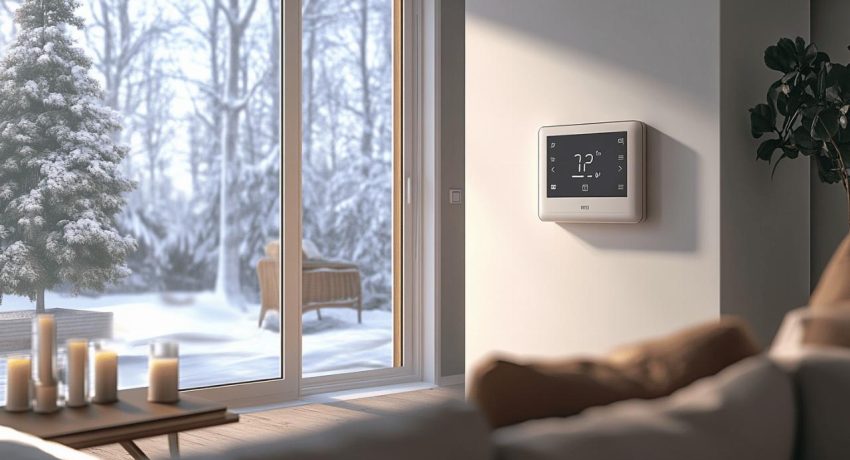Maintaining an energy-efficient heating system in your home is not only beneficial for reducing your carbon footprint but also crucial for managing your energy bills. With heating and hot water accounting for more than half of the typical household’s energy consumption in the UK, implementing smart strategies can lead to significant cost savings while ensuring your home remains comfortable throughout the colder months. By optimising your heating system, you could potentially cut heating costs by up to 30%, which makes a substantial difference to your annual expenditure.
Proper home insulation techniques
Before considering upgrades to your heating system, ensuring your home is properly insulated is the foundation of energy efficiency. The most energy-efficient heating system will still waste resources if your home is losing heat through poor insulation. A well-insulated property can reduce the need for heating in the first place, creating a more sustainable home environment. Professional energy assessments, as seen on https://www.kamerolli.it/, can identify areas where your insulation might be lacking and suggest targeted improvements.
Sealing windows and doors against draughts
Draught-proofing is one of the most cost-effective ways to improve energy efficiency in your home. By sealing gaps around windows and doors, you could save approximately £30 annually on your heating bills. This relatively simple measure prevents warm air from escaping and cold air from entering, maintaining a consistent temperature inside your home. Self-adhesive foam strips work well for movable gaps like those around windows and doors, while brush or hinged-flap draught excluders are ideal for letterboxes and keyholes.
Loft and wall insulation solutions
Loft insulation serves as a barrier to heat loss through the roof, which can account for up to 25% of heat loss in an uninsulated home. The recommended depth for loft insulation is at least 270mm, and upgrading your insulation could lead to substantial energy savings. Similarly, cavity wall insulation fills the gap between the two layers of your external walls, reducing heat transfer and potentially saving hundreds of pounds on annual heating costs. For homes with solid walls, either internal or external insulation can be applied, though these solutions tend to be more expensive and disruptive to install.
Heating system maintenance
Regular maintenance of your heating system is essential for optimal performance and longevity. A well-maintained system operates more efficiently, consuming less energy and producing fewer emissions. It also helps prevent unexpected breakdowns during cold weather when you need your heating the most.
Annual service benefits
Having your boiler or heat pump serviced annually by a qualified professional ensures it runs at peak efficiency throughout the year. This maintenance check can identify potential issues before they become serious problems, saving you from costly repairs down the line. During a service, a technician will clean components, check for wear and tear, and make any necessary adjustments to optimise performance. A properly serviced heating system can maintain its efficiency rating, whether you have a traditional gas boiler or a modern heat pump installation.
Filter replacement schedule
Clean filters are crucial for the efficient operation of your heating system. Clogged or dirty filters restrict airflow, forcing the system to work harder and consume more energy. For most systems, filters should be checked monthly during heavy use periods and replaced or cleaned according to the manufacturer’s recommendations. Some high-efficiency systems may have special filter requirements, so consulting your system’s manual or a heating professional can provide guidance specific to your equipment. Establishing a regular filter replacement schedule is a simple yet effective way to maintain efficiency and extend the life of your heating system.
Smart temperature control
Modern temperature control technology offers sophisticated ways to manage your heating system more effectively. Smart controls allow for more precise temperature management and can significantly reduce energy consumption while maintaining comfort levels throughout your home.
Programming your thermostat effectively
Setting your thermostat to a temperature between 18°C and 21°C provides comfortable warmth while avoiding excessive energy use. In fact, reducing your thermostat setting by just one degree from 22°C to 21°C could save approximately £90 per year in Great Britain and £100 in Northern Ireland. Using a programmer allows you to set specific times for your heating to turn on and off, ideally scheduling it to warm up about 30 minutes before you wake up or return home, and to switch off 30 minutes before you leave or go to bed. This ensures you’re only heating your home when necessary, avoiding wasted energy during periods when heating isn’t needed.
Zone heating strategies
Heating your entire home to the same temperature is often unnecessary and wasteful. Zone heating allows you to control temperatures in different areas independently, directing heat where and when it’s needed most. Thermostatic radiator valves (TRVs) are an excellent tool for this purpose, allowing you to set lower temperatures in rooms you use less frequently. Adding TRVs to a system that already has a programmer and thermostat could save around £35 annually in Great Britain and £45 in Northern Ireland. Smart radiator valves (SRVs) take this concept further, offering remote control and scheduling capabilities for individual radiators, creating an even more flexible and efficient heating system.

Upgrading to modern heating systems
As heating technology advances, newer systems offer significant improvements in energy efficiency. If your current system is more than 10-15 years old, upgrading could lead to substantial energy and cost savings over time, despite the initial investment required.
Comparing system efficiency ratings
When considering a new heating system, efficiency ratings provide a helpful comparison tool. Modern condensing boilers typically achieve efficiency ratings of up to 90%, meaning they convert 90% of their fuel into heat. Heat pumps can achieve even higher efficiency levels, sometimes exceeding 300% as they extract heat from the environment rather than generating it directly. Electric heating systems are technically 100% efficient at converting electricity to heat, but the higher cost of electricity often makes them more expensive to run unless powered by renewable sources. Looking at these ratings alongside your specific heating needs and local energy prices can help determine which system will be most efficient for your home.
Cost-benefit analysis of replacement
Upgrading from an older, inefficient boiler to a modern A-rated model with proper heating controls could save approximately £420 annually in Great Britain and £500 in Northern Ireland. While the upfront cost of a new system can be significant, these savings mean the investment often pays for itself within several years. Heat pumps typically have higher installation costs but offer lower running costs and reduced carbon emissions. Government incentives and grants are sometimes available to help offset the cost of upgrading to more energy-efficient systems, particularly those with low carbon emissions. When calculating the potential benefits, consider both the immediate energy savings and the longer-term reduction in maintenance costs that often comes with newer, more reliable equipment.
Optimising radiator performance
Even with an efficient heating system, poorly performing radiators can undermine your energy-saving efforts. Ensuring your radiators work effectively is essential for maximising the efficiency of your entire heating system.
Bleeding radiators: step-by-step guide
Air trapped in radiators creates cold spots and reduces heating efficiency, as the system must work harder to achieve the desired temperature. Bleeding your radiators at least once a year removes this trapped air and improves heat distribution throughout your home. The process involves using a radiator key to open the bleed valve slightly until water begins to appear, then closing it again. Starting with the radiators on the lowest floor and working upwards ensures the most effective bleeding. This simple maintenance task requires no special skills yet can significantly improve heating performance and reduce energy consumption.
Balancing your heating system
A balanced heating system ensures that hot water circulates evenly through all radiators, preventing some from becoming too hot while others remain cold. Balancing involves adjusting the lockshield valves on each radiator to control the flow of water through the system. While more complex than bleeding, proper balancing creates consistent warmth throughout your home and reduces strain on your boiler. Ensuring radiators aren’t obstructed by furniture or covered by curtains also improves their efficiency. For radiators on external walls, installing reflective foil behind them can direct more heat into the room rather than losing it through the wall, particularly in properties with poor wall insulation.
Passive heating methods
Complementing your heating system with passive heating techniques can further reduce energy consumption. These methods harness natural heat sources and improve heat retention with minimal or no energy input.
Maximising natural sunlight
The sun provides free heating energy that can be harnessed effectively with thoughtful home management. During daylight hours, opening curtains and blinds on south-facing windows allows sunlight to naturally warm your home. This solar gain can significantly reduce the burden on your heating system, especially during winter months when heating demands are highest. Strategic placement of furniture can also help maximise the benefit of sunlight, ensuring that the warmth is distributed effectively throughout living spaces rather than being absorbed by large items placed directly in the path of sunlight.
Thermal curtains and window treatments
While allowing sunlight in during the day is beneficial, preventing heat loss at night is equally important. Closing curtains or blinds as darkness falls creates an additional barrier against heat escaping through windows, which are typically the least insulated parts of a home. Thermal curtains with special linings can reduce heat loss by up to 25% compared to standard curtains. For single-glazed windows or those in particularly cold areas, temporary secondary glazing solutions such as clear plastic film can provide additional insulation at a fraction of the cost of replacement windows. These passive methods require minimal investment yet can yield significant energy savings when used consistently throughout the heating season.








